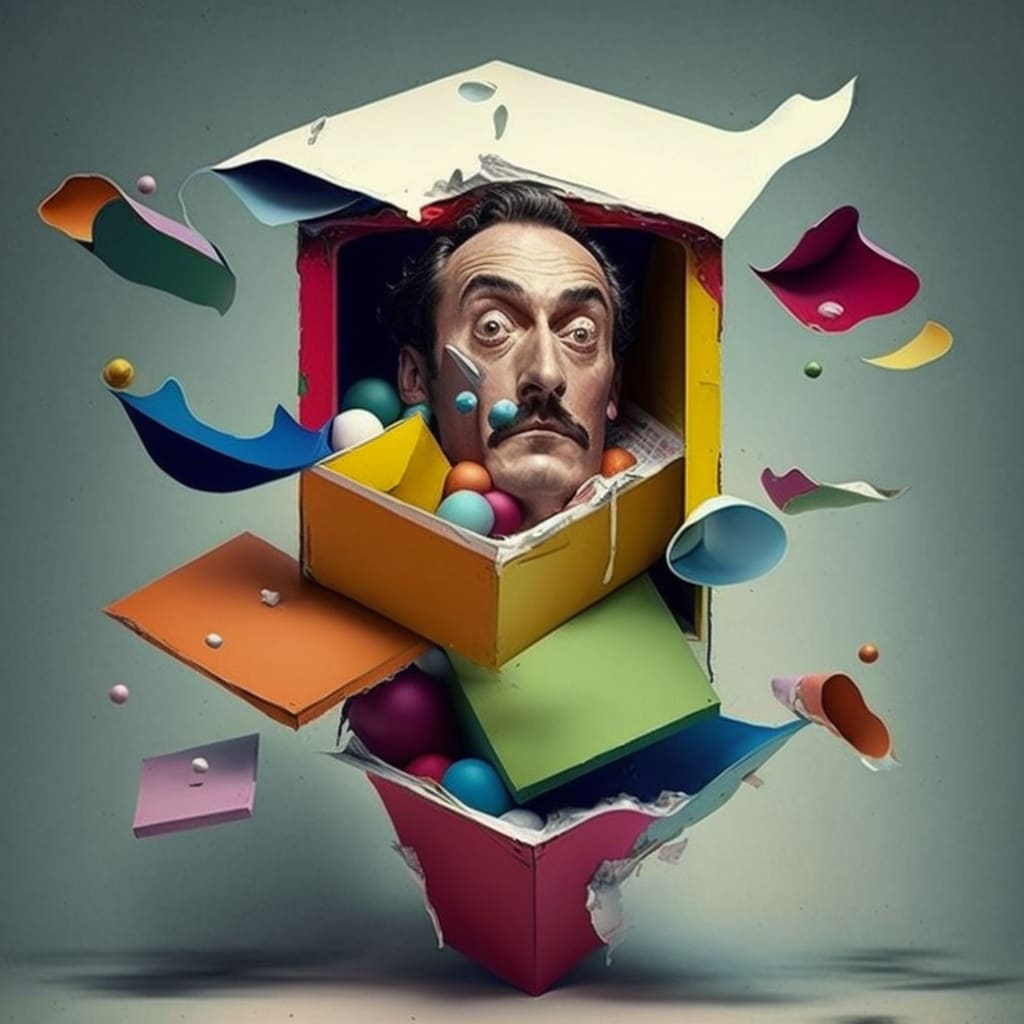A Surprising Discovery
the Science of Creativity

Are you feeling stuck in a creative rut? Whether you're an artist, entrepreneur, or student, creativity is a crucial skill for success. But what if you're not feeling particularly creative? Fortunately, there are scientific strategies that you can use to enhance your creativity and unlock your full potential. Here are some fun and practical tips to get your creative juices flowing.
Practice Divergent Thinking
Divergent thinking is the ability to generate multiple ideas or solutions to a problem. This type of thinking is associated with creativity and has been shown to be a key factor in enhancing creative output. To practice divergent thinking, try brainstorming multiple solutions to a problem or exploring multiple possibilities in a project. Don't be afraid to think outside the box or consider unconventional ideas. Here are some examples of famous artists who have used divergent thinking to produce groundbreaking work:
Pablo Picasso was a pioneer of the cubist movement, which broke down traditional forms and presented multiple viewpoints of a subject simultaneously. His famous painting "Les Demoiselles d'Avignon" is an example of how divergent thinking can be used to create new artistic forms.
Salvador Dali was a master of surrealism, a movement that explored the unconscious mind and the dream world. His famous painting "The Persistence of Memory" is an example of how divergent thinking can be used to create new and unexpected imagery.
Banksy is a contemporary street artist who uses a variety of mediums to make political and social commentary. His famous works, such as "Girl with Balloon" and "Love is in the Air," are examples of how divergent thinking can be used to create impactful and thought-provoking art in unconventional spaces.
In conclusion, divergent thinking has been used by many successful artists throughout history to create groundbreaking work. By embracing this tool, you can generate creative ideas and unique perspectives in your own artistic endeavors. So go ahead, think outside the box, and see where your creativity can take you!
Cultivate Associative Thinking
Associative thinking involves making connections between seemingly unrelated ideas or concepts to generate new insights and solutions. Here are some real-life examples of how associative thinking has been used to create innovative products and solutions:
The development of Apple's iconic iPod is a great example of associative thinking. Steve Jobs and his team saw the potential to combine the technology of a hard drive with the simplicity and ease of use of a music player. This combination of seemingly unrelated ideas led to the creation of a groundbreaking product that revolutionized the music industry.
The invention of Velcro is another example of associative thinking. Swiss engineer George de Mestral was inspired to create the hook-and-loop fastener after observing the burrs of a burdock plant sticking to his clothes and his dog's fur. By connecting the idea of natural adhesion with a practical application, he created a product that is still widely used today.
The founders of Airbnb, Brian Chesky and Joe Gebbia, used associative thinking to create their company. When they realized that hotels were booked out in San Francisco, they decided to rent out their apartment with air mattresses on the floor, and provide breakfast to their guests. By connecting the idea of the sharing economy with the need for affordable accommodation, they created a wildly successful business.
Nature-Inspired Design: Many modern technologies and designs have been inspired by nature, such as the development of airplane wings based on the shape of bird wings. By connecting the efficiency and functionality of natural forms with human needs, scientists and designers have been able to create innovative solutions to a variety of challenges.
Associative thinking is a powerful tool for generating new ideas and solutions. By connecting seemingly unrelated ideas and concepts, we can create innovative products and solutions that have a lasting impact on society. So go ahead, let your mind wander and see where your associative thinking can take you!
Develop Cognitive Flexibility
Cognitive flexibility is the ability to shift between different modes of thinking and adapt to changing situations. This type of thinking is associated with creativity and has been shown to be a key factor in enhancing creative output. To develop cognitive flexibility, challenge yourself to think in new and different ways. Try a new hobby, learn a new skill, or read a book on a topic outside of your comfort zone.
Practice Mindfulness
Mindfulness is the practice of being present in the moment and aware of your thoughts, feelings, and surroundings. This type of practice has been shown to enhance focus and reduce distractions, which can in turn enhance creative output. To practice mindfulness, set aside time each day to meditate or engage in deep breathing exercises. You can also practice mindfulness in your daily activities, such as taking a walk in nature or savoring a cup of tea.
By implementing these scientifically-backed strategies, you can unlock your full creative potential and enhance your output. Remember, creativity is not just reserved for artists and writers, but is a crucial skill for success in all areas of life. So go ahead, embrace your creativity, and see where it can take you!
About the Creator
Enjoyed the story? Support the Creator.
Subscribe for free to receive all their stories in your feed. You could also pledge your support or give them a one-off tip, letting them know you appreciate their work.





Comments
There are no comments for this story
Be the first to respond and start the conversation.